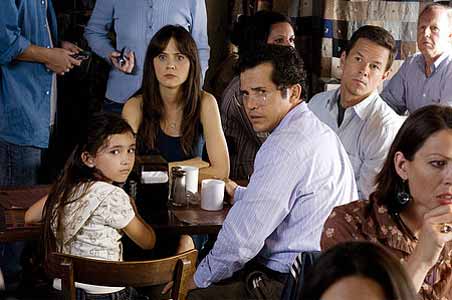|
Click here to return to the main site. M. Night Shyamalan (Director) - The Happening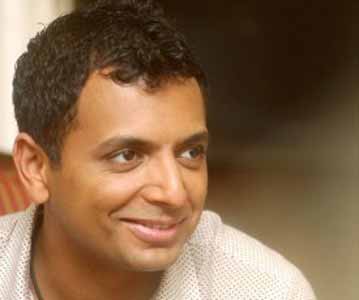 Since his 1999 film The Sixth Sense grossed a staggering $672 million across the globe, M. Night Shyamalan has become regarded as one of Hollywood’s leading filmmakers. His films have dealt with popular mythology - superheroes (Unbreakable), aliens (Signs), fairy tales (The Village) and mermaids (Lady in the Water) - while grounding them in a world we all recognise. His latest film, The Happening, is yet another example of Shyamalan’s uncanny ability to tap into our fears: an airborne toxin, spread by plants and trees, causes those infected to commit suicide. With no explanation for this ‘happening’, so begins this gripping eco-thriller. At its heart lies an ordinary couple - biology teacher Elliot Moore (Mark Wahlberg) and his wife Alma (Zooey Deschanel) - caught up in the ensuring chaos. Reviewgraveyard.com caught up with Shyamalan as The Happening was released on Blu-ray and DVD... Reviewgraveyard: You have a great ability to conjure up central ideas - in this case ‘a toxin causes suicide’. Is that how it starts for you?
I just wait for an idea - like: "What does the toxin do? How does it affect us?" You go through the normal process - like it turns you into a creature or makes you attack each other. But I didn’t think that was scary for me. What’s the scariest thing? Someone not acting like themselves, acting in reverse. What’s the reserve behaviour of a human being? Killing yourself. RG: So was the initial idea an airborne, plant-spread toxin? MNS: That was the initial idea. Somewhere in the back of my mind, I had read about plants producing things into the air. Putting oxygen out, and helping us, they’re the ones that are allowing us to live there. So I thought: "What if they decided that this was not what they were going to do anymore?" RG: Are you very eco-friendly yourself? MNS: I’d be the first one the plants would kill! That’s what the fear is - the guilt of it all. I guess as you grow up, you start to think more about the impact of your actions. When you’re younger, you think: "Screw that!" But as you get older you think: "What’s this world we’re leaving for my daughters and their children?" But the good news is, where I live, I bought a property and I conserved it. No one can ever build on that property, even if I don’t live on it anymore. You can’t build on that land forever. Even when I sell the property, they have to buy it with that. In that county where I live, half the county [Willistown, Pennsylvania] has started to do that.
MNS: You end up in an area that looks a lot like Willistown, about twenty minutes from my house. We have Arundel County, which is fictional. I was reading [Agatha Christie’s] The Murder of Roger Ackroyd. There is a Dr. Arundel, so I took that! There’s always references to the things that I’m reading at the time in the screenplay. RG: What can fans look forward to in the DVD release? MNS: I know I put in a couple of the ‘death moments’ in a more extended way. It’s like a longer version of a sequence that I felt was crossing the line and getting too gratuitous. I wanted it to be right at the line but not go crazy. RG: Like the scene where the man in the zoo gets his arms ripped off by the lions? MNS: Yes! It’s amazing. He is lying on the ground and the lion is pawing him [in the extended version]. It goes for his throat and then the camera pans away. It’s brutal [laughs]. There’s a couple of them like that. RG: Have you contributed to any ‘making of’ features? MNS: Yeah, we did a bunch of ‘making of’ features - such as the idea of making a ‘hard R’ movie for the first time. What was that like and how did we achieve those kind of sequences with special effects? So like the car hitting the tree. It looks very simple - it seems like one shot - but it’s actually very, very complicated. RG: Was that your intention - to get an R rating in the US?
It reminded me of the visceral nature of The Exorcist or The Godfather - these things where you go: "The tonality of this world is very edgy and dangerous and you’re not safe in this world." Characters are not safe and neither are you. RG: It felt like you wanted to get back to basics with The Happening. Is that right? MNS: Very much so. I think that’s a good way of putting it. I kept telling everybody, we are just going to do a classic dive off the diving board. Not with a triple axle twist or too many acrobatics. Just show great form, great skill at the craft of it - and go from A to Z. RG: Did you also want to make something that eschews CGI?
I try to do as much as I can mechanically and then enhance it with the CGI, so you can’t see the string and the wires I’m using to show bodies moving. For me, I wanted it to feel like a naturalistic movie in all senses. So if that was done with CGI, you wouldn’t believe it. Those are real bodies going through the windows [of the car]. Then with CGI, you’re putting the two shots together. A real car hit a real tree and real bodies went through a real window - just not at the same time. RG: It fells like a companion film to The Village, with overtones of terrorism... MNS: Yeah, it’s moved on. The fears of our society right now, of our neighbours and strangers, are clouding us. We’re totally f*cked up right now. We need to move on from that. There are other things we need to worry about, larger things, that affect all of us. RG: Your choice of casting was interesting - all very different styles between Mark, Zooey and John [Leguizamo, who plays Elliot’s colleague Julian]... MNS: What I was looking for was vibrant colours from people. I didn’t want to have people that worked too much in the conflict, actors that worked internally, grappling with their internal problems. It’s a gut thing. So I only cast people that went out. I felt like the movie was so dark and scary, that I needed people not to do the internal thing.
RG: Talking of Mrs. Jones, you distil it down to just one person in that final act... MNS: It’s true. Fox read the script and said: "You do the exact opposite of every disaster movie that’s ever happened." Normally, you start with a couple of people and end up with the whole world but this does it in reverse. It starts with huge crowds of people - train stations and big, big scenes - and then it goes down to fifty people, ten people, five people for a while, then three people. RG: You feature a fractured family here, as you have in your earlier work. Why do you go back to this?
RG: True. Though you have a stable family life and you always write about broken family units... MNS: Yes! My wife could go on for an hour about this for a way! Like: "Why do you keep killing off the wife? Is this some kind of fantasy you have?" I’m like: "No, no no! It’s not like that at all. I kill off everybody sooner or later!" RG: Are your parents together still? MNS: Yeah, they’re together still - still biting and yelling at each other! It’s a pretty tight family all around. I guess when you have something like that, you fear losing everything. Like: "What if this or that happens?" The fear of it... you have this: "Did you hear something downstairs? Where’s Mark Wahlberg when you need him?" RG: Will you ever make a movie outside Pennsylvania? MNS: Well, my next movie is. I’ve been waiting for the kids to grow up a bit. I wanted to have a lifestyle that is healthy. I can write whatever I want - ‘Interior. Cave. Australia’ - but that means I’m stuck in Australia for six months. Pennsylvania is such a great location for all these phenomenon to happen. I guess since I grew up in the Spielbergian prototype... when he used to write and come up with them, he would put them in the developments of suburbia, and wacky sh*t happened - ET came down or whatever. And I get it. I didn’t grow up in that area, but I grew up in Pennsylvania. Country roads and all that stuff. That’s why with Night of the Living Dead, I thought: "I could do that!" RG: Can you say more about your new movie?
I’ve always toyed with doing a Harry Potter. I’ve been offered all these fantasy movies and struggled over the decision of whether to do them or not. I really like that format of a movie. I think I could do an interesting version of one of those. I don’t see them that way - the way they’re made. I see them in a different way and I’ve been waiting for the moment to do one. RG: You got critically attacked for Lady in the Water. Did you learn something from that? MNS: Yeah. You see the other team getting ready to give you an elbow, and they go: "You try to score that and they’re going to f*cking kill you’ and you go: "F*ck that!" You go right down that lane, and take all the kicks and the elbows. And the point is to get up again and go: "I’m still going to go down that lane!" As I’ve said, some fights are worth fighting for, even if you know you’re going to lose it. The bully that bullies you only bullies you until you fight back once. You don’t have to win the fight. Bullies don’t want to really get into fights every day. The thing is to go: "Enough!" I feel so happy and free. I’m so sick of being scared of being hit - in the fight you just lower your hands and take the f*cking blow, then put your hands back up again and go: "Now I know I’m not scared anymore and you know I’m not scared anymore. Is that all you got?" It’s so freeing. I used to study martial arts and it’s almost like you’re a lesser version of yourself because you’re using so much to protect yourself. That’s not the skill you should be learning, especially as an artist. You should just be free. RG: So did all this feed into The Happening? MNS: Yeah, I was really happy. In the end, The Happening was the easiest movie I’ve ever done - for my family and for me. It was just a lot of fun to do. It was clean and creatively it all came together very quickly. And I wrote my next movie while I made this one. At lunch, I’d write for an hour, and I was writing in pre-production and on weekends. It’s so exciting to not be fearful of things. RG: Did the failure of Lady in the Water effect the budget of The Happening?
RG: How much did the book - The Man Who Heard Voices - written about the making of Lady in the Water effect you? MNS: It’s interesting. Like fifty people read that book! It was always meant to be a film book. It was meant to be a ‘making of’ for Disney, and it was started months before anytime I left Disney. This was a guy who said: "I want to write about your process of making a movie." Ironically, the intention was to show a vulnerable version of me. I said: "Write whatever you want." I had no control over it. If he hated my guts, it was all on him. But as it turned out, as he liked me, I got fleeced. If he hadn’t, they’d say: "What a great, insightful book!" They would’ve loved the negative stuff he’d have written about me, but they wouldn’t say he was arrogant for having done the book, like it was a PR exercise. RG: Thank you for your time.
The Happening is released on Blu-ray and DVD from Twentieth Century Fox Home Entertainment from 03 November 2008. Click here to buy The Happening on Blu-ray for £17.98 (RRP: £28.99) Return to... |
|---|
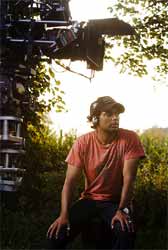 M. Night Shyamalan: Well, the good news is, it’s not done as an agenda. It just so happens I love cheeseburgers and Coca-Cola. Seinfeld is my favourite comedy and Michael Jordan my favourite athlete. It just so happens my instincts are that way. I don’t have to go: "Why do people like cheeseburgers anyway?" I don’t do that. That’s been the lucky break for me. Who I am and what people relate to are similar. We have similar tastes. When I’m writing and I go: "That’s really freaky", generally people will agree.
M. Night Shyamalan: Well, the good news is, it’s not done as an agenda. It just so happens I love cheeseburgers and Coca-Cola. Seinfeld is my favourite comedy and Michael Jordan my favourite athlete. It just so happens my instincts are that way. I don’t have to go: "Why do people like cheeseburgers anyway?" I don’t do that. That’s been the lucky break for me. Who I am and what people relate to are similar. We have similar tastes. When I’m writing and I go: "That’s really freaky", generally people will agree. RG: How far is that from where the film was shot?
RG: How far is that from where the film was shot?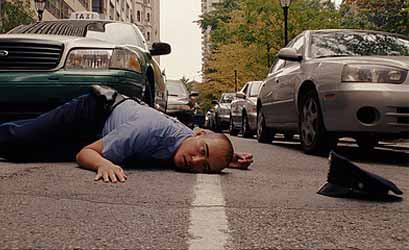 MNS: Yes. It’s really what the nature of the piece was. The movie that tipped me over was
MNS: Yes. It’s really what the nature of the piece was. The movie that tipped me over was 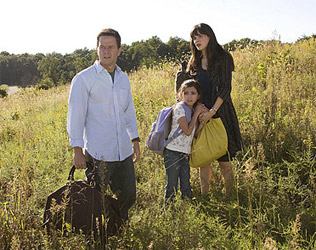 MNS: I’m a big fan of using CGI to help you perform the magician’s sleight-of-hand. I’m very old school. If the equivalent is Hitchcock’s The Birds, they did some cool stuff at that time with special effects...
MNS: I’m a big fan of using CGI to help you perform the magician’s sleight-of-hand. I’m very old school. If the equivalent is Hitchcock’s The Birds, they did some cool stuff at that time with special effects... 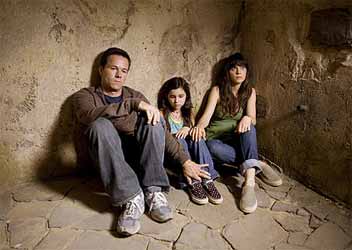 Let’s say, William Hurt goes internal. And for The Village that’s perfect. But I needed to have actors that are external - I wanted real great colours through the movie. So if Zooey is scared, she expresses it through nervous humour. And John is a charming maths teacher, not a bookish one. All the way through to Betty Buckley at the end. I wanted you to get to the final act and then meet the most vibrant person in the movie. A lot of people said: "You can make the movie just about her! The Mrs. Jones movie."
Let’s say, William Hurt goes internal. And for The Village that’s perfect. But I needed to have actors that are external - I wanted real great colours through the movie. So if Zooey is scared, she expresses it through nervous humour. And John is a charming maths teacher, not a bookish one. All the way through to Betty Buckley at the end. I wanted you to get to the final act and then meet the most vibrant person in the movie. A lot of people said: "You can make the movie just about her! The Mrs. Jones movie."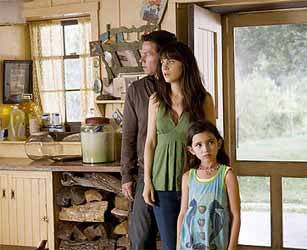 MNS: I just think because you write things that are important to you, and family is obviously a giant thing... I have oriented my life and career around that. I’m always at dinner. When they lose their tooth, I’m there. It’s a primary fixture in my life, in terms of the hierarchy and as an author. If you went on a safari for a year, you’d end up writing about a guy on safari!
MNS: I just think because you write things that are important to you, and family is obviously a giant thing... I have oriented my life and career around that. I’m always at dinner. When they lose their tooth, I’m there. It’s a primary fixture in my life, in terms of the hierarchy and as an author. If you went on a safari for a year, you’d end up writing about a guy on safari!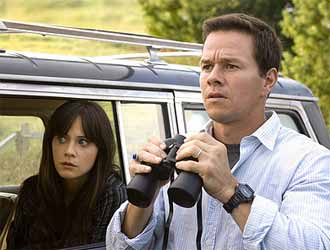 MNS: It’s for Paramount Pictures. It’s called The Last Airbender. It’s not an original of mine for the first time. It’s based on a Japanese anime. The title of the show is Avatar: The Last Airbender but James Cameron is doing that. We actually tried [to get that title] as it pre-existed his film, but he has it for movies.
MNS: It’s for Paramount Pictures. It’s called The Last Airbender. It’s not an original of mine for the first time. It’s based on a Japanese anime. The title of the show is Avatar: The Last Airbender but James Cameron is doing that. We actually tried [to get that title] as it pre-existed his film, but he has it for movies.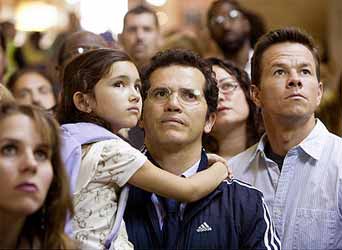 I made a genre-less movie, a vulnerable movie, that I believe was very, very beautiful, knowing it didn’t fit on the shelf anywhere. It was like: "Will you take the opportunity to chuck it outside the store?" And they did - they grabbed it and through it. I consciously broke every rule of safety.
I made a genre-less movie, a vulnerable movie, that I believe was very, very beautiful, knowing it didn’t fit on the shelf anywhere. It was like: "Will you take the opportunity to chuck it outside the store?" And they did - they grabbed it and through it. I consciously broke every rule of safety.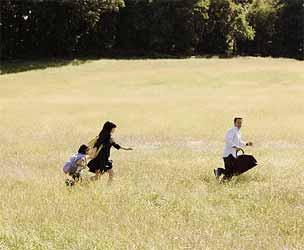 MNS: No, not really. They’re all about the same budgets. This one we kept under budget - partly because we were shooting outdoors in the day. It’s faster and quicker.
MNS: No, not really. They’re all about the same budgets. This one we kept under budget - partly because we were shooting outdoors in the day. It’s faster and quicker.